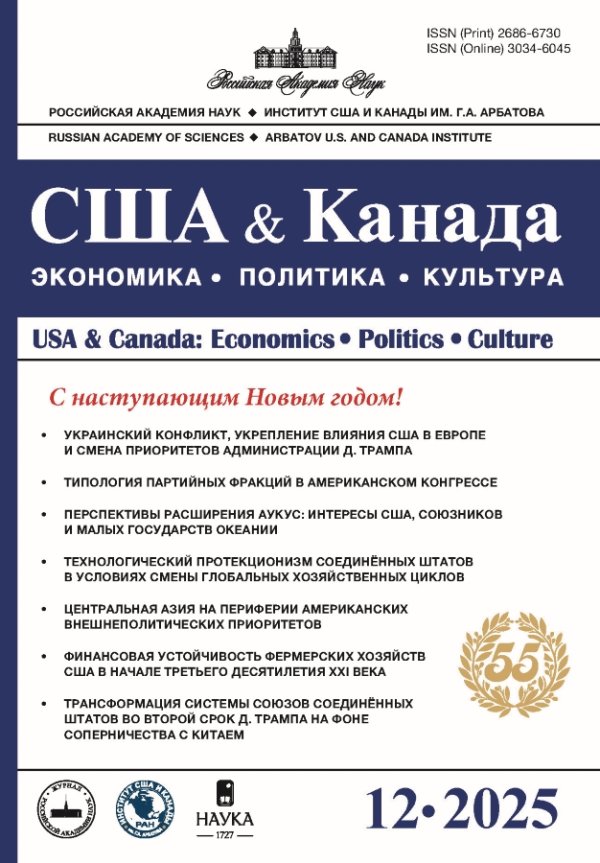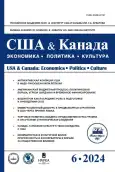Военная стратегия администрации Дж. Байдена в Индо-Тихоокеанском регионе
- Авторы: Батюк В.И1
-
Учреждения:
- Институт Соединённых Штатов Америки и Канады имени академика Г.А. Арбатова Российской академии наук (ИСКРАН)
- Выпуск: № 6 (2024)
- Страницы: 5-15
- Раздел: Статьи
- URL: https://journals.rcsi.science/2686-6730/article/view/261187
- DOI: https://doi.org/10.31857/S2686673024060014
- EDN: https://elibrary.ru/ZBRSVY
- ID: 261187
Цитировать
Полный текст
Аннотация
Ключевые слова
Об авторах
В. И Батюк
Институт Соединённых Штатов Америки и Канады имени академика Г.А. Арбатова Российской академии наук (ИСКРАН)
Email: ctas@inbox.ru
ORCID iD: 0000-0003-1838-8616
Scopus Author ID: 54883750900
ResearcherId: O-9977-2015
доктор исторических наук, главный научный сотрудник Российская Федерация, Москва
Список литературы
- США планируют в 2024 году разместить наземные ракеты средней дальности в Азии. ТАСС. 03.12.2023. Available at: https://tass.ru/mezhdunarodnayapanorama/19441939. (accessed 29.02.2024).
- Indo-Pacific Strategy Report. Preparedness, Partnerships, and Promoting a Networked Region. July 1, 2019. The Department of Defense. – Washington, D.C., 2019.
- Indo-Pacific Strategy of the United States. – White House, Washington, D.C. February 2022.
- National Defense Strategy of the United States of America. Including 2022 Nuclear Posture Review and 2022 Missile Defense Review. – Washington, D.C. Department of Defense. October 27, 2022.
- National Security Strategy. February 2015 – Washington, D.C., 2015.
- National Security Strategy of the United States of America. December 2017. – Washington, D.C., 2017.
- National Security Strategy. October 2022. – White House, Washington, D.C., 2022.
- Statement of Admiral John C. Aquilino, U.S. Navy Commander, U.S. IndoPacific Command. U.S. Indo-Pacific Command Posture. 20 March 2024.
- Summary of the 2018 National Defense Strategy of the United States. Washington, D.C. Department of Defense. 2018.
- Батюк В.И. Структура взаимоотношений в рамках «стратегического треугольника» (США – КНР – РФ) // Россия и Америка в 21 веке. 2020 г. Выпуск № 3. doi: 10.18254/S207054760011657-9 (accessed 01.06.2020)
- Batyuk, V.I. Novaia rossiisko-amerikanskaia gonka iadernykh vooruzhenii [The structure of relations within the framework of the "strategic triangle" (USA – China – Russia)] (In Russ.). Russia and America in the 21st century. 2020. № 3. doi: 10.18254/S207054760011657-9 (accessed 01.06.2020).
- Binnendijk, H., Gompert, D. Towards Nuclear Stewardship with China Survival. 2023, No. 1. Available at: https://doi.org/10.1080/00396338.2023.2172846 (accessed 10.01.2024).
- Brands, H. Ukraine War Shows the US Military Isn’t Ready for War with China. Bloomberg. 18.09.2022. Available at: https://www.bloomberg.com/opinion/articles/2022-09-18/ukraine-war-shows-the-us-military-isn-t-ready-for-war-with-china (accessed 01.10.2022).
- Copp, T., Baldor, L. China to increase nuclear warheads to 1,500, Pentagon warns. Associated Press. November 29, 2022. Available at: https://apnews.com/article/taiwan-europe-china-united-states-beijingaf4dd76e993f450df7af8e63d1a0187c (accessed 15.12.2022).
- Glaser B., Weiss J., Christensen T. Taiwan and the True Sources of Deterrence. Foreign Affairs. November 30, 2023. Available at: https://www.foreignaffairs.com/taiwan/taiwan-china-true-sources-deterrence (accessed 01.10.2022)
Дополнительные файлы










